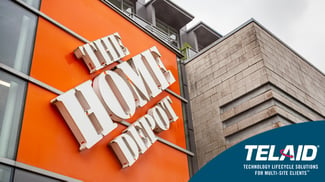 While retailing may look significantly different than it did a decade ago, at its core, retail is still retail. The industry is still in the business of delivering critical goods and services to customers and they still rely on customers to buy their goods and return again and again.
While retailing may look significantly different than it did a decade ago, at its core, retail is still retail. The industry is still in the business of delivering critical goods and services to customers and they still rely on customers to buy their goods and return again and again.
Amid a flurry of technological advances and shifts in consumer behaviors, some retailers have become enamored with investor demands, gross margin and operational efficiency, while forgetting the lifeblood of their business: the customer. Without the customer, there is no revenue, there is no profit, there is no business.
With this in mind, here are some key takeaways from The Home Depot’s success story.
- Embrace servant leadership – The three founders of The Home Depot - Arthur Blank, Bernie Marcus and Pat Farrah - had very unique perspectives, backgrounds and capabilities. What they had in common was their servant leadership style. Each exhibited this servant leadership in their own “hands-on” style. For example, CEO Bernie Marcus “managed by wandering around,” meaning he spoke with customers, employees, vendors and investors and came to understand what was really happening in the stores and overall organization. He considered his role was to be an ombudsman for the stakeholders and provide whatever employees needed to better serve customers. This style of servant leadership empowers employees, fills them with a sense of purpose and drives them to take action to delight the customer.
- Empower your associates – Decentralization and delegation empower employees who are in front of customers. When leaders set the expectations and model brand-appropriate behavior by educating the associates as to both how and why decisions are made, employees feel empowered to make decisions in line with the company culture. When employees act by doing the right thing, leaders should reward them with financial and public recognition to celebrate a virtuous cycle of positive action and customer satisfaction.
- Make sure your brand experience is seamless – In their fervor to build e-commerce capabilities, many retailers construct an “online shopping” empire that is separate from their physical store operations. This is a terrible idea. Your brand is your most valuable asset, and the customer doesn’t want to have one brand experience online and then a completely different one in the store. The two should be harmonized, seamless and completely interconnected. Done well, online and physical presence should add up to 1+1=3, delivering options and convenience in new ways to delight the customer.
- The customer determines the “right” price – Many retailers start with the cost of goods and add a historical margin to determine the price of that item. However, the “right” price of an item is based on the customer’s perception. If customers don’t find value in product pricing, they will simply shop elsewhere. Loyalty and return visits are associated with customers who find the right prices that encourage purchasing today and loyalty tomorrow. This is a challenging but important concept for retailers to grasp, but one that is critical to long-term success.
In a recent podcast series, Beth Bergmann, host of the TelaidTechConnect Podcast, and I discussed some of the secrets of The Home Depot’s success and the importance of culture. In part 2 of the podcast series, we outlined 10 principles of high productivity retailing. I encourage you to listen to both part 1 and part 2 for some lessons learned from one of the greatest retailers of all time.
Yes, retail is a different beast than it was more than 40 years ago when The Home Depot was founded. But several of the guiding principles they followed are timeless and can keep retailers today on the path to success rather than be diverted off track. Culture has and will always drive performance, especially in the face of massive changes. Let your customers inspire you to success in this emerging digital age.




